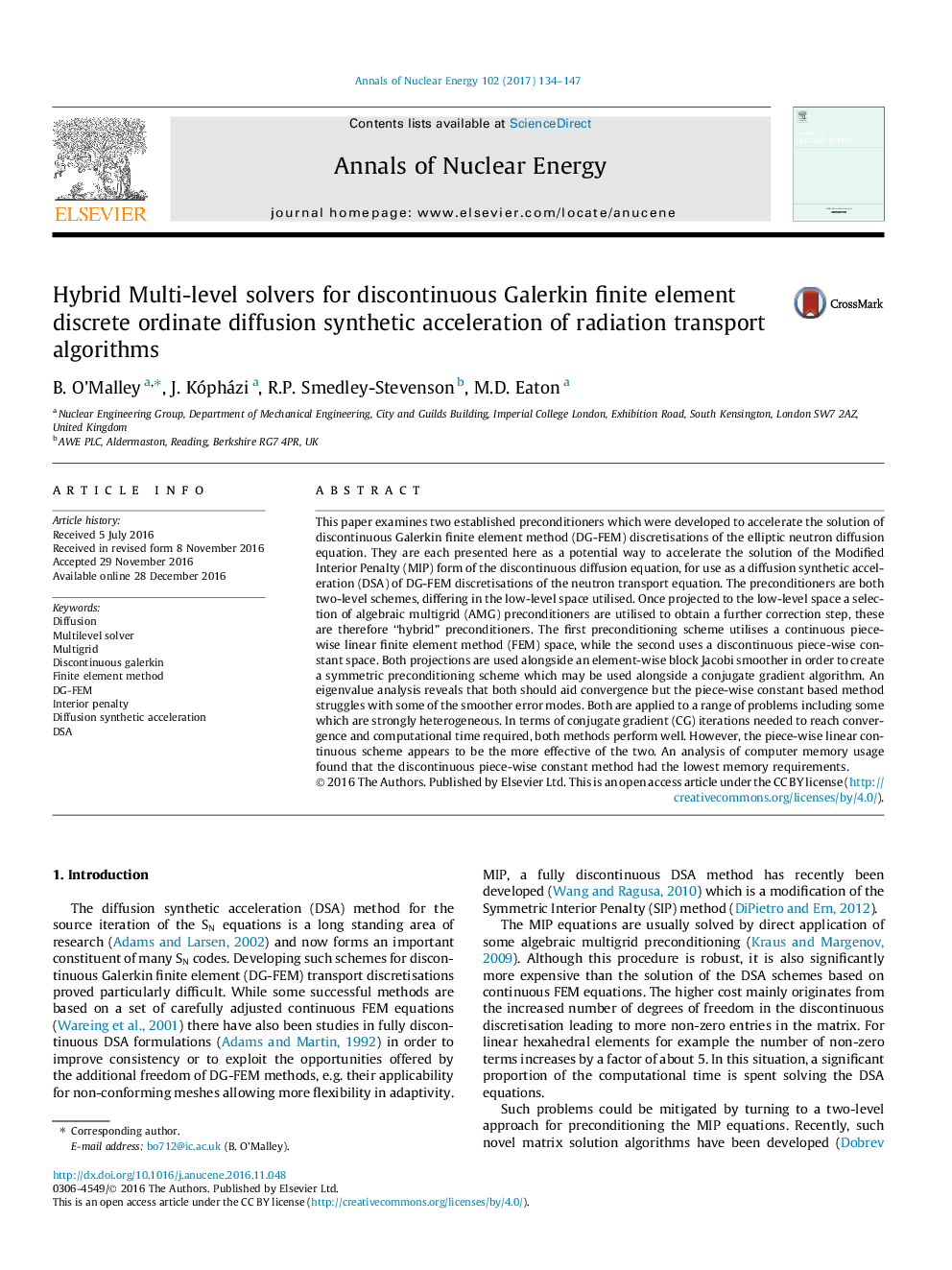| Article ID | Journal | Published Year | Pages | File Type |
|---|---|---|---|---|
| 5475311 | Annals of Nuclear Energy | 2017 | 14 Pages |
â¢Two preconditioners to accelerate MIP forumlation of DG-FEM diffusion.â¢First method projects from linear discontinuous to linear continuous space.â¢First method projects from linear discontinuous to constant discontinuous space.â¢Used in combination with various AMG algorithms for low-level correction.â¢Various AMG methods used to provide performance benchmarks.
This paper examines two established preconditioners which were developed to accelerate the solution of discontinuous Galerkin finite element method (DG-FEM) discretisations of the elliptic neutron diffusion equation. They are each presented here as a potential way to accelerate the solution of the Modified Interior Penalty (MIP) form of the discontinuous diffusion equation, for use as a diffusion synthetic acceleration (DSA) of DG-FEM discretisations of the neutron transport equation. The preconditioners are both two-level schemes, differing in the low-level space utilised. Once projected to the low-level space a selection of algebraic multigrid (AMG) preconditioners are utilised to obtain a further correction step, these are therefore “hybrid” preconditioners. The first preconditioning scheme utilises a continuous piece-wise linear finite element method (FEM) space, while the second uses a discontinuous piece-wise constant space. Both projections are used alongside an element-wise block Jacobi smoother in order to create a symmetric preconditioning scheme which may be used alongside a conjugate gradient algorithm. An eigenvalue analysis reveals that both should aid convergence but the piece-wise constant based method struggles with some of the smoother error modes. Both are applied to a range of problems including some which are strongly heterogeneous. In terms of conjugate gradient (CG) iterations needed to reach convergence and computational time required, both methods perform well. However, the piece-wise linear continuous scheme appears to be the more effective of the two. An analysis of computer memory usage found that the discontinuous piece-wise constant method had the lowest memory requirements.
